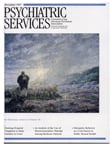A Guide to Treatments That Work
As the jacket of A Guide to Treatments That Work indicates, this comprehensive volume (594 fine-print, double-column pages and tables) assembles a distinguished group of 61 psychiatrists and clinical psychologists to take stock "of current drug treatment and psychotherapeutic interventions to see which treatments actually work, which do not, and which still remain beyond the scope of our current knowledge." To accomplish this daunting and important task, "All available outcome and clinical trials are reviewed, and detailed specification of methods and procedures to ensure effective treatment for each major DSM-IV disorder is provided." The volume encompasses 28 chapters as well as a 12-page "Summary of Treatments That Work" presented at the beginning of the book.
The editors provide chapters for all of the DSM-IV categories that have known treatments. The pattern is to provide two chapters—one discussing pharmacologic treatment approaches and the other discussing nonpharmacologic or psychosocial treatment approaches—for disorders for which both types of therapies exist; some disorders are covered in only one chapter. The purpose of the chapters is to present the most rigorous, scientifically based evidence for the efficacy of treatments that is available.
As the editors point out in their enlightening introductory chapter, "It is clear that for some disorders there are treatments widely recognized by experienced clinicians to be useful that may not have been subjected to rigorous investigation." The aim of this book is "to be clear with readers what treatments have been scientifically validated, what treatments are felt by a large number of experts to be valuable but have never been properly scientifically examined, and what treatments are known to be of little value."
The origins of the book are not without history and controversy, as is cogently noted in both the foreword and the afterword by Martin E. P. Seligman. Dr. Seligman was president of the American Psychological Association's division of clinical psychology in the mid-1990s when he created a task force to review well-done, controlled outcome studies and identify "treatments that work" (1). The history relates to a progression of outcome studies dating from Eysenck's 1952 landmark paper (2), "The Effects of Psychotherapy," in which no evidence of psychotherapy's effectiveness was noted, to more current and increasingly positive evaluations of both psychotherapy outcomes and the methodologic rigor used in their assessment. Today we are moving closer to recognizing which psychotherapeutic or pharmacologic approach is most effective for which person and in which treatment setting.
The controversy relates to the fear, beginning with the development of this book, that if it were an "official" document of the division, it might imply that the American Psychological Association endorsed its contents. We have seen the development of a level of confidence in treatment approaches that has now blossomed into "empirically supported treatment guidelines" published by the American Psychological Association (3) and "practice guidelines" published by the American Psychiatric Association—for instance, the American Psychiatric Association's guidelines for major depressive disorders in 1993 (4), for bipolar disorders in 1994 (5), and for substance use disorders in 1995 (6), followed by others. However, one should note that this level of confidence in guidelines may not always be warranted. They can stifle other therapeutic approaches less amenable to the research paradigms currently used, or they may be employed in a clinically restrictive way by contemporary care (that is, cost) managers.
Be that as it may, this book represents an invaluable update of contemporary psychotherapeutic, including psychopharmacologic, treatments of DSM-IV psychiatric disorders. It will be useful for both the academician and the practicing clinician and will be referred to frequently by its appreciative owner.
Dr. Jacoby is codirector of the department of psychiatry at Bayonne (N.J.) Hospital and clinical associate professor of psychiatry at the University of Medicine and Dentistry of New Jersey in Newark.
1. Task Force on Psychological Intervention Guidelines: Template for Developing Guidelines: Interventions for Mental Disorders and Psychosocial Aspects of Physical Disorders. Washington, DC, American Psychological Association, 1995Google Scholar
2. Eysenck HJ: The effects of psychotherapy: an evaluation: Journal of Consulting and Clinical Psychology 60:659-663, 1952Google Scholar
3. Chambless DL, Baker MJ, Baucom DH, et al: Update on empirically validated therapies II. Clinical Psychologist 51(1):3-16, 1988Google Scholar
4. American Psychiatric Association: Practice Guideline for Major Depressive Disorder in Adults. American Journal of Psychiatry 150(Apr suppl):1-26, 1993Google Scholar
5. American Psychiatric Association: Practice Guideline for Treatments of Patients With Bipolar Disorder. American Journal of Psychiatry 151(Dec suppl):1-36, 1994Google Scholar
6. American Psychiatric Association: Practice Guideline for the Treatment of Patients With Substance Use Disorders: Alcohol, Cocaine, Opioids. American Journal of Psychiatry 152(Nov suppl):1-59, 1995Google Scholar



